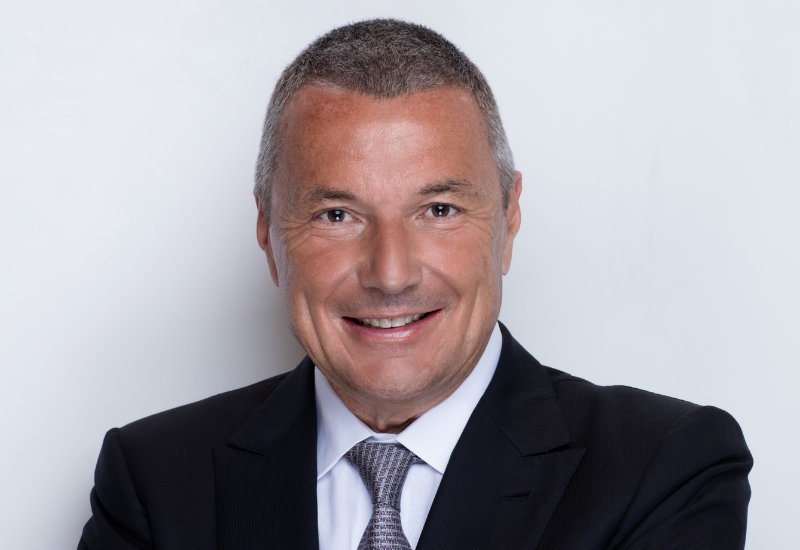The CEO of Bulgari, Jean-Christophe Babin, is shaping the future of an iconic Italian brand that has in many ways defined the zeitgeist of luxury in general and jewellery and watchmaking specifically for several decades already.
What is the current scale of Bulgari’s operations?
We will be 140 years old next year and are therefore a well-established luxury brand. We are 100 per cent Italian, although our watches are made in Switzerland in order for them to be officially classified as Swiss-made. The watches are made in Switzerland, but they are developed and designed in Italy. Jewellery, however, is our core business and will always remain our core business. We also have the fashion accessories, hospitality, and fragrance divisions. Essentially, we’re five companies in one.
We’re quite decentralized by way of our operations. The perfumes and watches are made in Switzerland. I split my time between Rome and Switzerland. Our silk scarves and accessories are manufactured in Como and our leather goods in Firenze. The jewellery is crafted in our factory in Valenza and the high jewellery in Rome. Valenza is the largest manufacture in Europe for jewellery and is set to be crowned the largest manufacture of its kind in the world as we’re now more than doubling its capacity.
We also have a worldwide logistics supply chain center in Ireland which distributes all Bulgari watches and jewellery to our subsidiaries worldwide. We have about 20-something subsidiaries in the major markets including India, the Middle East, and the United States. Within those subsidiaries, we have 225 boutiques – as you can find in Dubai Mall or Mall of the Emirates – which are directly managed by Bulgari.
Bulgari employs 6,000 people across its watches, jewellery, perfumes and fashion accessories divisions, and another 2,500 people in the hotels. Altogether, we have 8,500 employees.

How important is the jewellery and watch business overall to Bulgari?
For over a century now, we’ve been a watchmaker. Logically, we began with jewellery watches back in 1919. The first watch was born out of jewellery and until today our watches are shaped by jewellery. The Serpenti is the best example. Our watches are growing double digits – we’re increasing our market share among the watches exported by Switzerland, and this is primarily thanks to Serpenti which is gaining a critical mass and entering into the top ten ladies’ watches in the world, if not the top five.
And along with the Serpenti, you have the Octo – the Finissimo and Roma – and we’ve started producing the new Octo Finissimo at the beginning of summer.
As for jewellery, we are now recognised as a high jeweller which also makes jewellery pieces. When I came to the brand we were probably known as a jeweller making some high jewellery pieces. We’ve now reversed that perception. That has in turn allowed us to achieve a brand image which helped to overall pulls up not only the price of the jewellery that we sell, but everything else as well.
How do the other divisions within Bulgari support the growth of its jewellery and watches?
The major division for Bulgari is its jewellery – that division is much bigger than the others. You then have the watches followed by the hotels, fashion accessories and perfumes.
Our hospitality division brings to our brand wealthy clients who pay anywhere between €3,000-€50,000 per night for a suite, and who are also perhaps interested in buying high jewellery and watches. It’s not easy for a luxury brand to find new clients every year. People don’t go and buy a watch or a piece of jewellery as often as they would a handbag, for example. Fashion accessories, by definition, adhere to a trend and people love to follow current trends so it’s not unusual for a lady to buy four handbags in a year. But with watches and jewellery, the demand for them is less because it’s more of a timeless object that never goes out of fashion.
What is the association of Bulgari with the UAE?
It’s been around 15 years since we’ve been partnering with Emirates airline in the UAE. We are the only luxury amenities supplier of Emirates which is a great honour for us. You can imagine other brands would love to have such a chance, but against all odds, we’ve managed to deserve the ability to remain with Emirates and find creative solutions for their amenity kits. It’s a collaboration that we’re very proud of.
Just before the start of the pandemic, we also collaborated with Her Highness Sheikha Fatima bint Hazza Bin Zayed Al Nahyan from Abu Dhabi for the Jannah jewellery collection which is a testimony to the respect we have for the Arab world and the Arab culture. We’ve also collaborated with local artists for Art Dubai which and that part of that collaboration is commercial while another part of that is artistic. During the Expo 2020 in Dubai, we were one of the main partners of the Italy pavilion and also took part in the catering of that pavilion [with Il Ristorante – Niko Romito of Bulgari Resort Dubai].
As far as key global talent for Bulgari goes, we have managed to recruit many of them which is very important for the future of the company, including one of them based out of Dubai.
What is your presence like in the other GCC markets?
We have subsidiaries in all the GCC countries. The youngest one is in Saudi Arabia where we started a direct subsidiary two years ago. We have two stores in Saudi right now and a third will soon open. By 2024, we will have five stores in Saudi Arabia which I think is the right number for it. As projects such as NEOM and the Red Sea develop, that number will go up to seven. We have a jewellery show in Saudi Arabia by the end of this year too.
Our subsidiary in Qatar meanwhile was started ten years ago. In Qatar, we are one of the leading jewellery brands in that market. We are at Place Vendome, which is the talk of the town there. The proportion of consumption among tourists in Qatar is less than that of the UAE. Qatar is more of a domestic market. We’ve also participated in the Doha Jewelry and Watches Exhibition. Likewise, we’re also present in other GCC countries including Kuwait and Bahrain.

What is the approach that Bulgari takes when it comes to auctions?
Our approach to participating in auctions is carried out in a very scientific way. We have a matrix of periods and categories and objects that we want to acquire. Bulgari is a brand that is nearly 140 years old. But our interest in it goes back 160 years before the Bulgari brand was even formed as we are interested in buying some of the silverware crafted in Greece by the Voulgaris family.
We know exactly what we want to buy at auctions, and so we participate in auctions where there are pieces which we want. For Bulgari, the dream is obviously to acquire creative expressions of each decade when it comes to our jewellery.
A 100 per cent of what we buy at auctions is not for sale. It’s for exhibiting not only at big exhibitions, but also more casually at new store openings so that clients can see the pieces of the past and better understand the evolution of the brand and where we are today.
We closely cooperate with the likes of Christie’s, Sotheby’s, Bacs and Russo, etc. Before proposing masterpieces to an auction, they often want Bulgari to certify it. We’ve digitalised all our archives so that we can quickly retrieve information about a specific piece.
How significant is e-commerce for Bulgari?
When it comes to e-commerce, we’re present in more than 80 countries. The e-commerce penetration can vary from one country to another. Today, it’s dominated by the US and China. These are the two countries where people will buy expensive items online – Americans even buy houses online, so they don’t have a problem buying a piece of high jewellery online. The Chinese also buy luxury online, but for different reasons. Most cities which have luxury boutiques in China are far away from where the majority of Chinese live. There are 750 million Chinese living far from luxury stores. Therefore, luxury e-commerce has developed more rapidly in China compared to European countries where you’re never too far from a city with luxury boutiques. E-commerce can be anywhere between one to 15 per cent of the business, depending on the geography.
– For more on luxury lifestyle, news, fashion and beauty follow Emirates Woman on Facebook and Instagram
Images: Supplied












